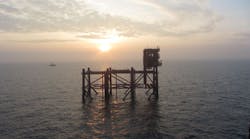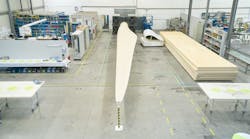Ian Verhappen
Industrial Automation Networks Inc.
All of us are aware that we are being inundated with data at an ever increasing rate. But how often are we able to use all this information to make informed decisions? Getting from data to action is a multi-step process in several dimensions.
The key tomanaging all this data is standards. Without standards to define the format in which the information is to be converted from bits into a signal - light (fiber optic), frequency (wireless), voltage or current (cable) - so that it can be transmitted and received as packets of information, it would all simply be noise. It is likely that a single packet of information moves from a field sensor in an offshore facility to the control room and then eventually to the corporate MES (manufacturing execution system) or ERP (enterprise resource planning) system.
Due to space limitations and to avoid becoming overly technical, the focus here will be on the data flow side of the equation.
The four levels of transformation when moving from data to action are: data (raw data collected from field sensors, operators, purchase orders, inventory levels, etc.), information (putting this information into context of place, time, relative amounts), knowledge (how the change in information affects the stability of the operation), and action (doing something to maintain equilibrium in the system). Let's take a look at each of these levels in more detail from the perspective of field devices.
Today's field sensors and actuators, including motor drives, all support some form of digital communication technology, whether it is HART, one of the all-digital protocols such as Modbus, or one of the many fieldbuses. In addition to the process signal, these devices can convey more than 300 parameters used to determine the health of the device, and hence not only the reliability of the signal itself but also the ability to predict when and what form of maintenance will be required to keep the signal within acceptable levels of tolerance. Taking advantage of this information means you will only operate your facility on information that you know is good, and with a bit more work allows you to better manage your spare parts and equipment maintenance.
Using the single status byte converts the data into information. However, to move the balance of the data from these field devices requires more work, typically in the form of intelligent device management. The International Society of Automation has a committee, ISA-108, working on standards for data flow and work practices in this area, so that data can consistently be used for more reliable operation of field devices and control systems.
Once it has been identified that device maintenance is required, the technicians then have to connect to the device. In the case of most process industries and hence offshore platforms, that will mean an EDDL (electronic device description language)-based device. However, the connection to that device or other devices such as motors may use other protocols to identify the problem, and then take corrective action without having to physically go into the field, thus reducing exposure hours of personnel. FDT technology is a widely used tool to provide a graphical interface to view and in some cases change the information in the device for a wide range of protocols with a common "look and feel" as defined in the ANSI/ISA-62453 (103) documents based on the IEC 62453 series of standards.
Field device data is also being used in control systems to maintain steady operations - and in the case of some advanced applications, to identify patterns of measurements indicating anomalies in the operation of other equipment such as separation vessels, heat exchangers, and pumps. The information indicates when equipment is not operating within or is approaching the limits of its design envelope.
Experienced operators know that when they see a pattern of readings, or hear a certain noise from a piece of equipment, that they have to respond in a certain way. This represents the knowledge that we are striving to capture with automated systems as represented by another ISA standard, ISA-106 ("Procedure Automation for Continuous Process Operations"), as well as at the higher levels of the enterprise ERP and CMM (continuous maintenance management) systems.
There are two primary organizations working to integrate the control system with enterprise systems: the ISA-95 Best Practices Working Group ("Enterprise-Control System Integration") and the Manufacturing Enterprise Solutions Association (MESA). They are defining the methods by which data can be consistently transferred between the various levels of an enterprise so that it can be integrated with business data points such as inventory, pricing, and workforce availability/planning.
Each of these systems is integrating ever more data into models that convert it into a form from which the systems themselves - through knowledge coded into them as rules, procedures, and algorithms - can automatically take action, or alert a person about the situation so that they can take the appropriate action in a timely manner, whether they are in an office in Houston, on a rig in theGulf of Mexico, or on a deep sea production facility.
Reliabledeepwater installation requires tight integration with all levels of the enterprise to manage the logistics of keeping the facility operating with spare parts, food and water, and maintenance. Integrating data from weather satellites and GPS signals with the rig controls keep the platform stable and properly oriented in the right location over the drilling or production site.
The tools and processes used to turn data to information, information to knowledge, and knowledge to action, are in many cases what separate the successful offshore companies in all facets of operation - drilling, production, safety, and environment - from their peers. Each of us, therefore, needs to answer the question of where are we in this hierarchy of integrated business operations. Our role as engineers and managers is to enable people to make the right decisions and take the actions that will maximize return on investment while being sure that everyone gets home safe at the end of the day.
The Author
Ian Verhappen, P.Eng., is an ISA Fellow, ISA Certified Automation Professional (CAP), Automation Hall of Fame member, and a recognized authority on process analyzer sample systems, Foundation Fieldbus, and industrial communications technologies. Verhappen provides consulting services in the areas of field level industrial communications, process analytics and hydrocarbon facility automation. Feedback is always welcome via e-mail at[email protected].




